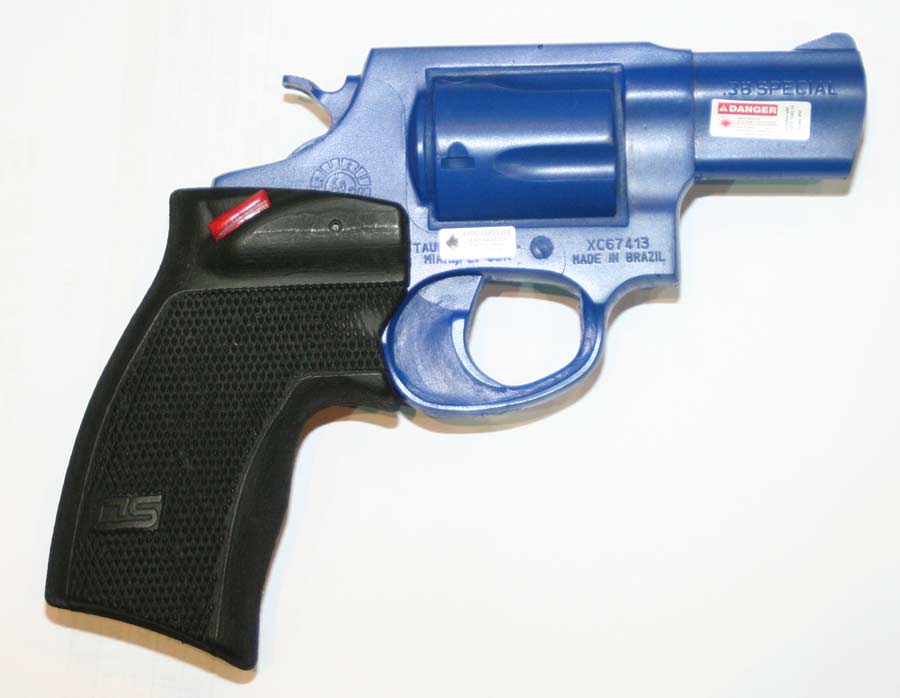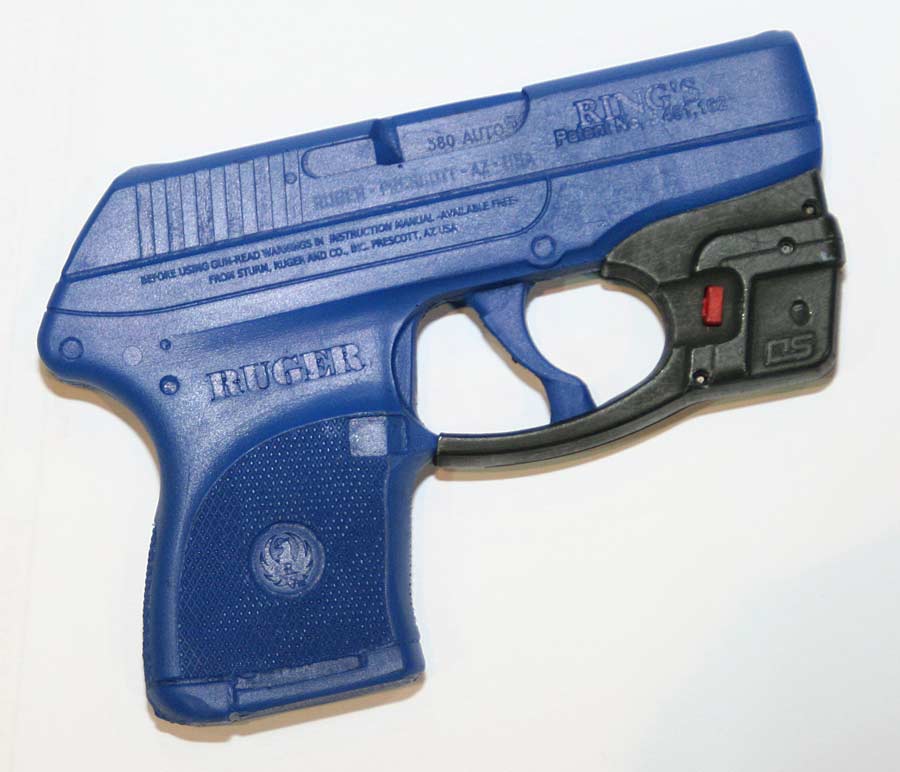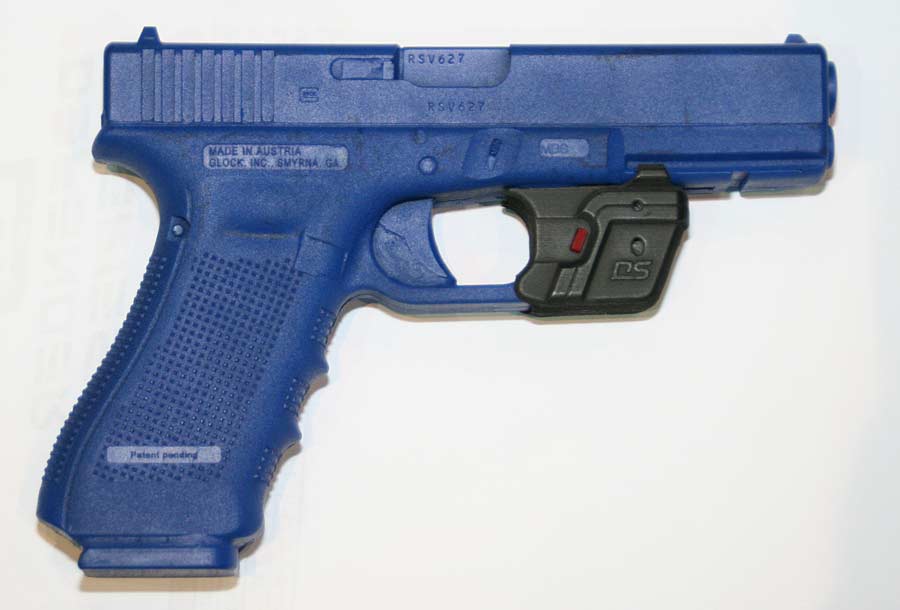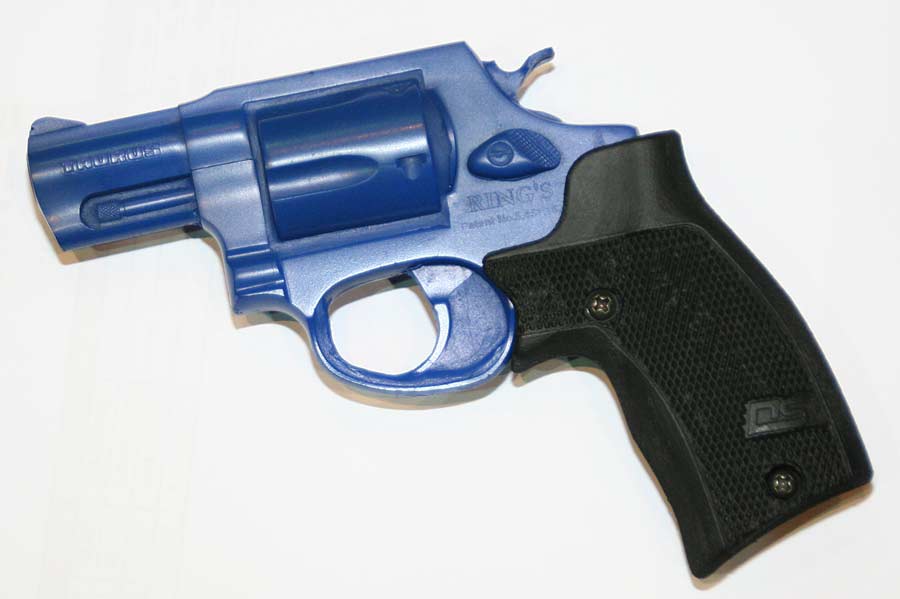Thanks to the good folks at Crimson Trace, I had a first look at the new Defender Series lasers they announced this week. The Defender Series is a collection of red lasers aimed at the budget market. Â The lasers run from $129 – 149 MSRP. This is significantly less expensive than some of the other offerings from Crimson Trace.
According to Jeff Goddard, Director of Sales for Crimson Trace, the company is able to make the lasers less expensive by reducing the options on the units, not by using cheaper parts. This means the customer should get the same high quality they have come to expect from all of the lasers in the Crimson Trace line.

The Defender Series will initially be offered in just a few models. The Accu-Grip will fit Smith & Wesson J-frame revolvers and Taurus model 85 revolvers. The Accu-Guard will fit most of the Glock line, the Ruger LCP and the Springfield XD(m).
Future models may roll out as soon as mid-2013, depending on demand. Other models that would likely roll out first would be for the 1911, 1911 compact, Hi Point and Taurus TCP pistols. However, these and other models are highly dependent on sales.
Using the different Defender Series lasers in the booth, they all seemed to work well. Red dot projection seemed identical to any other Crimson Trace laser.
Layout of the controls was the major difference obvious to me. The activation switch on the Accu-Grip is located on top of the replacement grip, on the right side of the frame. It is angled somewhat to the rear for the easiest possible access and activation.

This layout is significantly different from the instinctive activation of the Lasergrips models. With the Lasergrip models, there is a bit of hardware running between the grips which allows for the grip activation, but drives up the price.
The photos in this article are of the prototype lasers. The final products will work the same, and look much the same, but these are a little rougher looking than what will ship to consumers. So, if you spot any flaws, they are to be expected here. The production pieces will have the same fit and finish of other Crimson Trace laser products. By using a more conventional switch, Crimson Trace is able to sell the Accu-Grip for much less money.
The Accu-Guard bolts easily to the trigger guard of the gun. The shooter then reaches with his index finger to manually activate the laser. This is a general design that is common with many of the Crimson Trace competitors. Activation was neither easier nor harder than other, similar designs.

There are a few other differences to the Defender Series line. First, the lasers have a one year warranty, not a three year warranty. Secondly, the lasers have an estimated run time of two hours (continuous.) Lastly, the Defender Series lasers do not qualify for the free batteries for life program Crimson Trace offers.

